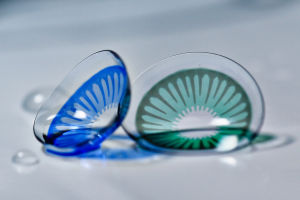German chamomile and Roman chamomile, two common varieties of chamomile, have some notable differences. Although they all belong to the same genus of plants, they have some differences in appearance, growing conditions, and uses.
First, German chamomile is distinctly different from Roman chamomile in appearance. German chamomile has smaller flowers, usually between 1 and 2 cm in diameter, while Roman chamomile has larger flowers, usually between 2 and 3 cm.
German chamomile has thinner petals with a yellow center, while Roman chamomile has wider petals with a yellowish center. Additionally, German chamomile has longer flower stems, while Roman chamomile has relatively shorter flower stems.
Second, the two types of chamomile also differ in their growing conditions. German chamomile is widely grown in Europe and North America and prefers warm climates and full sun. It is not demanding on the soil and can adapt to a variety of soil types.
In contrast, Roman chamomile is more common in the Mediterranean region, where it requires warmer climates and drier soil conditions to grow.
On top of that, the two types of chamomile also differ in their uses. German chamomile is widely used in herbal medicine and traditional Chinese medicine, and its flower parts are often used to make herbal teas or extract flower extracts.
German chamomile has sedative, anti-inflammatory, and anti-allergic properties and has been used to relieve anxiety, promote sleep and treat skin inflammation, among other things. Roman chamomile is mainly used in flower gardening and beauty fields. Its flowers have an aromatic smell and are used to make products such as soaps, shampoos, and essential oils.
In terms of chemical composition, German chamomile contains a variety of active ingredients, including volatile oils, flavonoids, coumarins, terpenes, etc. The most important ingredients are volatile oils, including α-folate, verbenone, etc. These components are what give German Chamomile its anti-inflammatory, calming, and anti-allergic properties.
Roman chamomile also contains similar components, but its chemical composition is relatively simple. The main active ingredient is a volatile oil, which contains α-folate, methylated α-folate, cinnamic acid, etc. These components are what give Roman chamomile its antibacterial, anti-inflammatory, and calming properties.
In terms of cultivation methods, German chamomile is usually grown on a large scale to meet its demand in the fields of herbal medicine and traditional Chinese medicine. German chamomile can be propagated by seed and grows quickly in favorable climates. It is adaptable and can grow in different soil types and climates.
Roman chamomile is more commonly cultivated in gardens for landscaping and adding color to flower beds. It can also be propagated by seed but may require more attention and maintenance in cultivation due to its preference for warmer and drier climates.
Additionally, there are differences in the traditional uses of German chamomile and Roman chamomile. German chamomile has a long history in Europe and elsewhere and is widely used in folk herbal traditions.
It is often used to treat conditions such as indigestion, headaches, colds, and skin inflammation. German chamomile is also a common ingredient used to make herbal teas and other herbal preparations.
Roman chamomile has been widely used in herbal remedies since ancient Rome and has a long history. It is commonly used to treat digestive problems, inflammation, and nervous system disorders, among other things. In addition, Roman chamomile is used in floral crowns, perfumes, and beauty products to impart a calming and antibacterial effect on the skin.
In summary, although German chamomile and Roman chamomile belong to the same genus of plants, they differ significantly in appearance, growing conditions, and uses.
Knowing these differences helps us better understand and utilize their features and benefits. Both types of chamomile have unique value and uses, both in the field of herbal medicine and in flower gardening and beauty.


